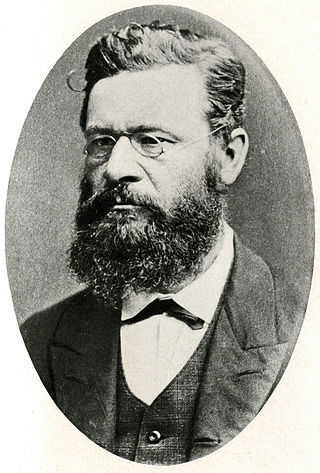Related Research Articles

Mycology is the branch of biology concerned with the study of fungi, including their taxonomy, genetics, biochemical properties, and use by humans. Fungi can be a source of tinder, food, traditional medicine, as well as entheogens, poison, and infection.
Genus is a taxonomic rank used in the biological classification of living and fossil organisms as well as viruses. In the hierarchy of biological classification, genus comes above species and below family. In binomial nomenclature, the genus name forms the first part of the binomial species name for each species within the genus.

Rusts are fungal plant pathogens of the order Pucciniales causing plant fungal diseases.

Warszewiczia is a genus of flowering plants in the family Rubiaceae. They are primarily tropical Central and South American trees and shrubs. Perhaps the most famous member of the genus is W. coccinea (chaconia), which is the national flower of Trinidad and Tobago.

Warszewiczia coccinea is a species of flowering plant in the family Rubiaceae. It is the national flower of Trinidad and Tobago because it blooms on 31 August, which coincides with the day that Trinidad and Tobago became independent from the United Kingdom.

Petter Adolf Karsten was a Finnish mycologist, the foremost expert on the fungi of Finland in his day, and known in consequence as the "father of Finnish mycology".
The Chaconia Medal is the second highest state decoration of the Republic of Trinidad and Tobago. Established in 1969, the medal honours long and meritorious service to promote national welfare or community spirit. It is awarded in three classes: gold, silver and bronze. The medal may only be awarded to ten individuals annually.
Chaconia may refer to:

The corticioid fungi are a group of fungi in the Basidiomycota typically having effused, smooth basidiocarps that are formed on the undersides of dead tree trunks or branches. They are sometimes colloquially called crust fungi or patch fungi. Originally such fungi were referred to the genus Corticium and subsequently to the family Corticiaceae, but it is now known that all corticioid species are not necessarily closely related. The fact that they look similar is an example of convergent evolution. Since they are often studied as a group, it is convenient to retain the informal (non-taxonomic) name of "corticioid fungi" and this term is frequently used in research papers and other texts.

The clavarioid fungi are a group of fungi in the Basidiomycota typically having erect, simple or branched basidiocarps that are formed on the ground, on decaying vegetation, or on dead wood. They are colloquially called club fungi and coral fungi.

The hydnoid fungi are a group of fungi in the Basidiomycota with basidiocarps producing spores on pendant, tooth-like or spine-like projections. They are colloquially called tooth fungi. Originally such fungi were referred to the genus Hydnum, but it is now known that not all hydnoid species are closely related.

The Chaconiaceae are a family of rust fungi in the order Pucciniales. The family contained 8 genera and 75 species in 2008. By 2020, there were 8 genera and 84 species.
Maravalia is a genus of rust fungi in the Chaconiaceae family. The widespread genus contains about 35 species that grow on angiosperms.
References
- ↑ "Chaconia Juel 1897". MycoBank. International Mycological Association. Retrieved 2011-07-10.
- ↑ Kirk PM, Cannon PF, Minter DW, Stalpers JA (2008). Dictionary of the Fungi (10th ed.). Wallingford, UK: CABI. p. 129. ISBN 978-0-85199-826-8.